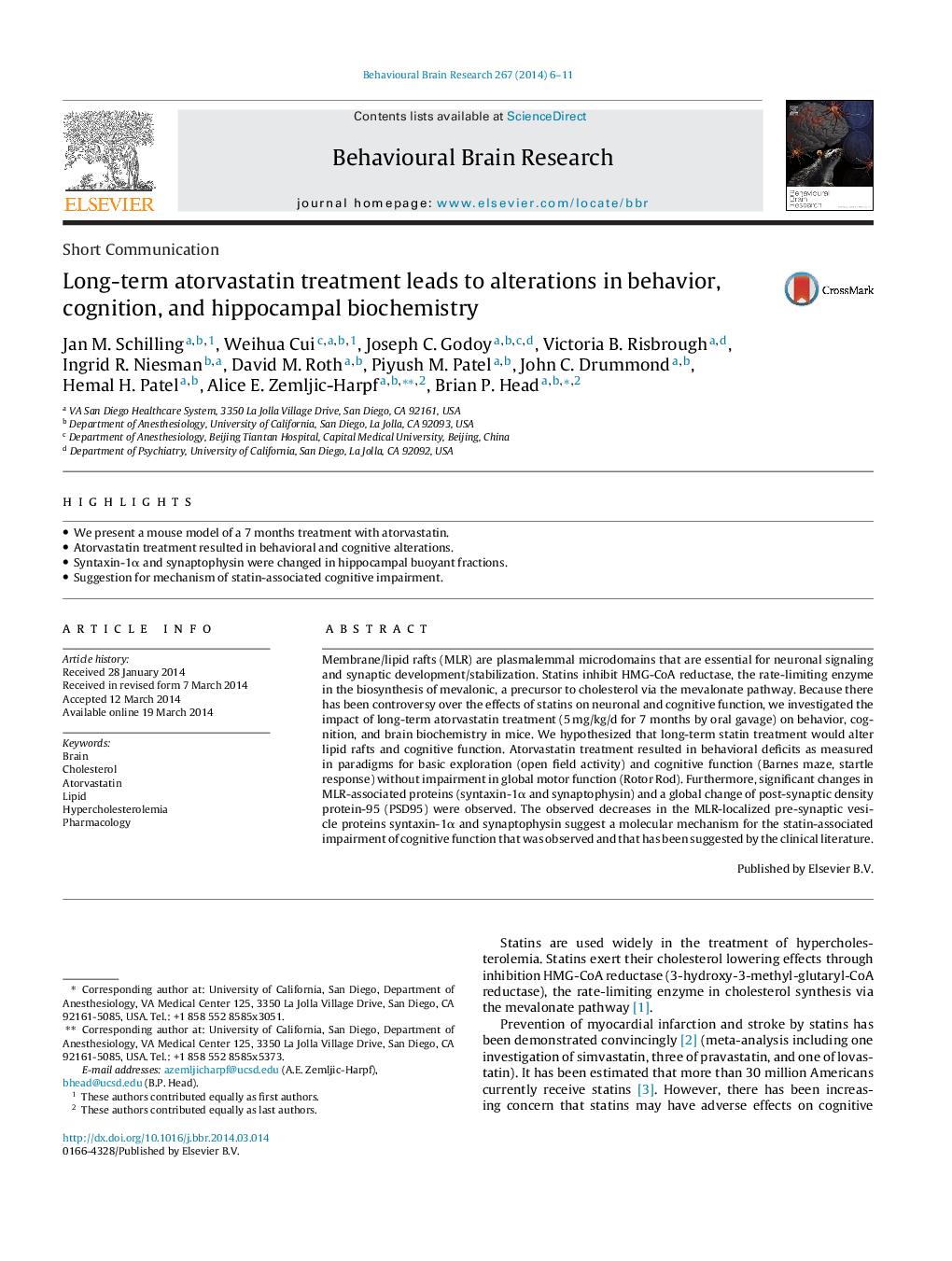| Article ID | Journal | Published Year | Pages | File Type |
|---|---|---|---|---|
| 4312540 | Behavioural Brain Research | 2014 | 6 Pages |
•We present a mouse model of a 7 months treatment with atorvastatin.•Atorvastatin treatment resulted in behavioral and cognitive alterations.•Syntaxin-1α and synaptophysin were changed in hippocampal buoyant fractions.•Suggestion for mechanism of statin-associated cognitive impairment.
Membrane/lipid rafts (MLR) are plasmalemmal microdomains that are essential for neuronal signaling and synaptic development/stabilization. Statins inhibit HMG-CoA reductase, the rate-limiting enzyme in the biosynthesis of mevalonic, a precursor to cholesterol via the mevalonate pathway. Because there has been controversy over the effects of statins on neuronal and cognitive function, we investigated the impact of long-term atorvastatin treatment (5 mg/kg/d for 7 months by oral gavage) on behavior, cognition, and brain biochemistry in mice. We hypothesized that long-term statin treatment would alter lipid rafts and cognitive function. Atorvastatin treatment resulted in behavioral deficits as measured in paradigms for basic exploration (open field activity) and cognitive function (Barnes maze, startle response) without impairment in global motor function (Rotor Rod). Furthermore, significant changes in MLR-associated proteins (syntaxin-1α and synaptophysin) and a global change of post-synaptic density protein-95 (PSD95) were observed. The observed decreases in the MLR-localized pre-synaptic vesicle proteins syntaxin-1α and synaptophysin suggest a molecular mechanism for the statin-associated impairment of cognitive function that was observed and that has been suggested by the clinical literature.
